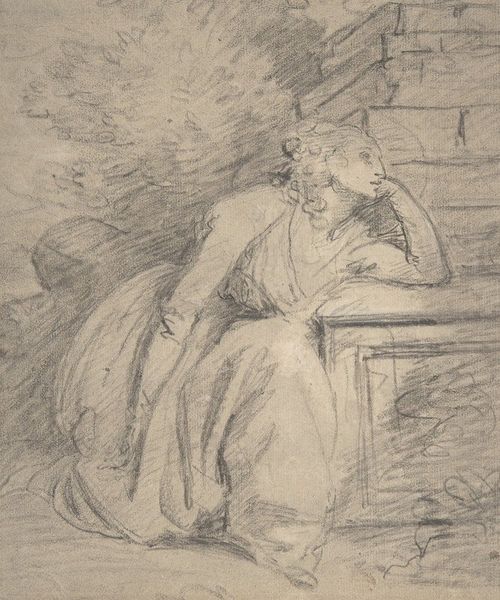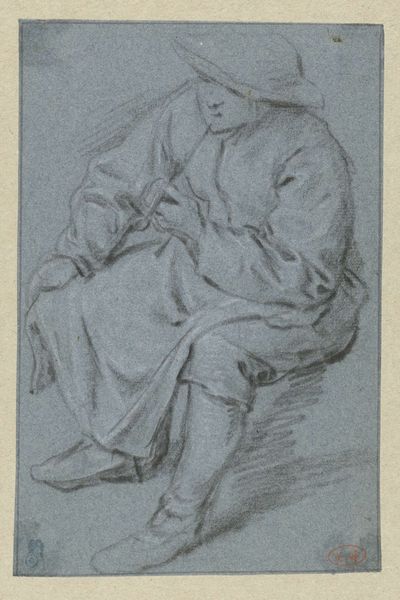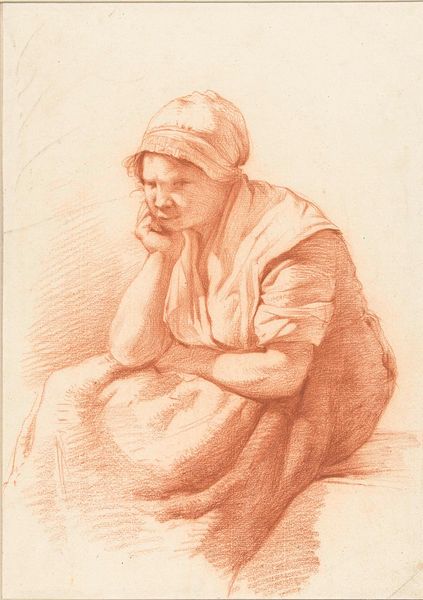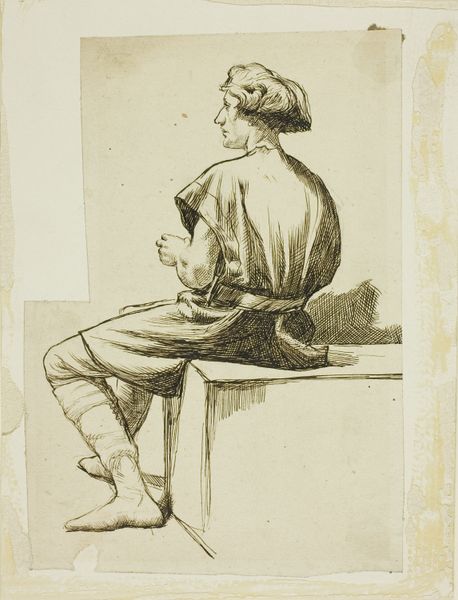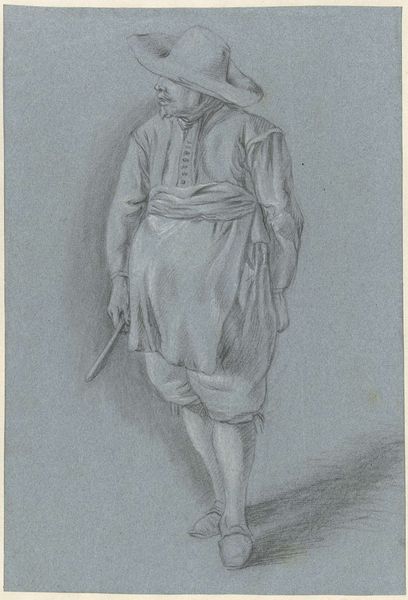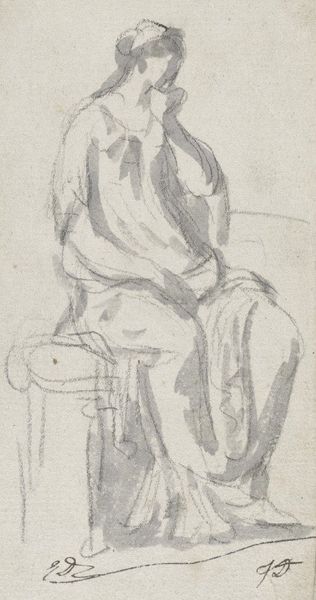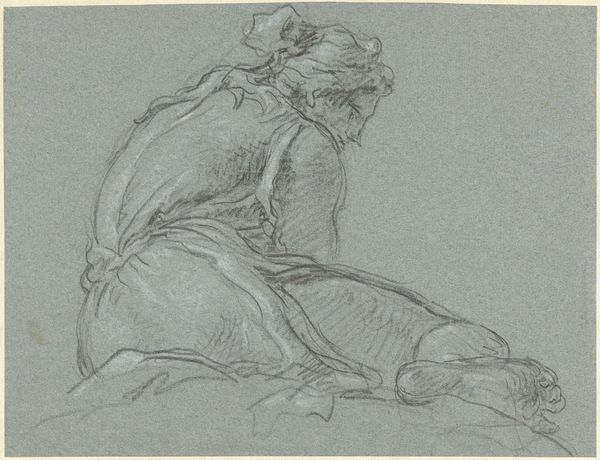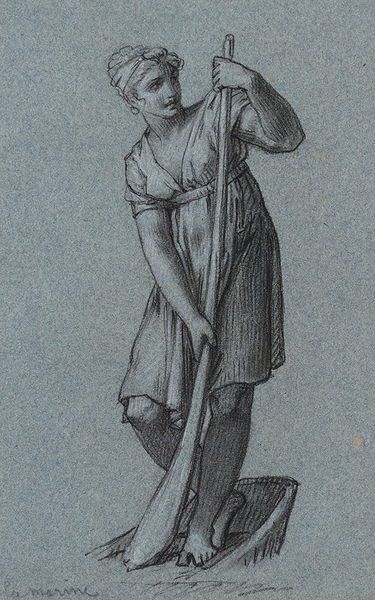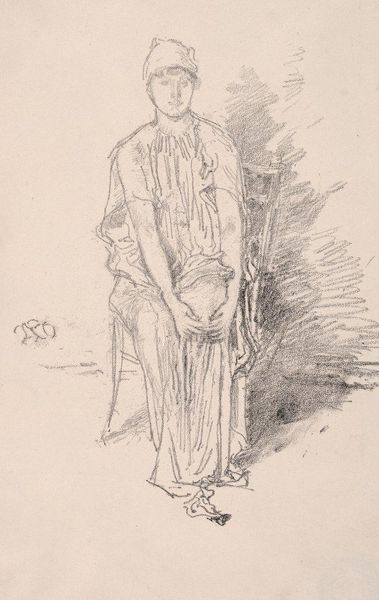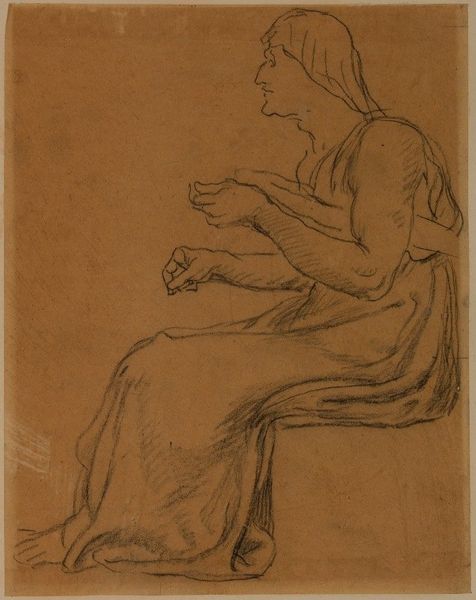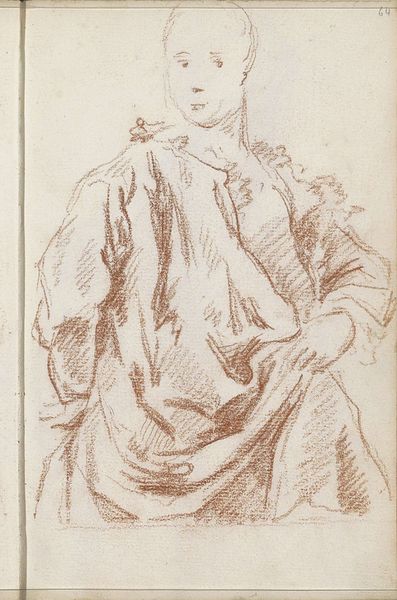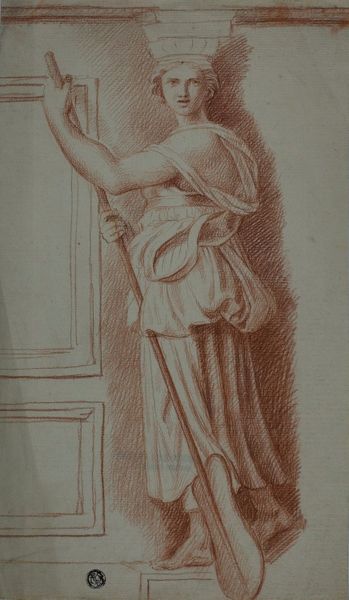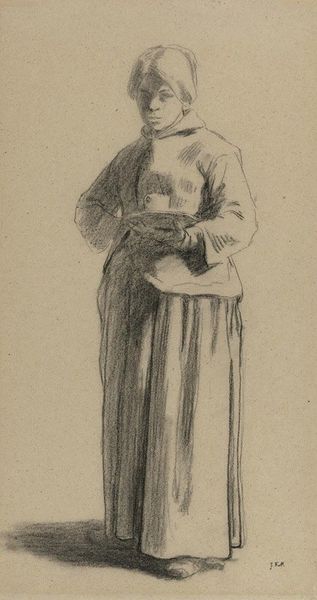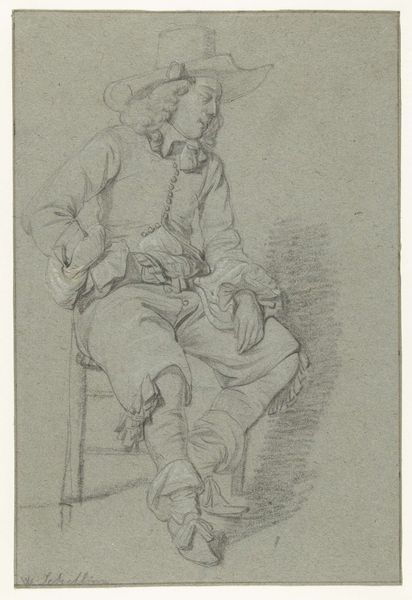
drawing, pencil
#
portrait
#
drawing
#
neoclacissism
#
figuration
#
pencil drawing
#
pencil
#
portrait drawing
#
academic-art
Copyright: Public Domain: Artvee
Curator: Here we have Pierre-Paul Prud'hon's pencil drawing, "Study for Astyanax's Nurse," created around 1812. It exemplifies the Neoclassical style, a study for a larger, more ambitious work. Editor: There's an incredible quiet intensity. I'm drawn to the way the artist captured the subject’s downward gaze and posture, all hunched over, like she carries the weight of a world on her shoulders. You can feel the emotion, it feels charged. Curator: Prud'hon's draftsmanship is remarkable; notice the economy of line, creating volume and shadow. The hatching and cross-hatching demonstrate a precise control over tonal gradation that lends depth to a fairly simple composition. We might decode this pose, then, not simply as grief but an almost classical sorrow. Editor: It reminds me a bit of Michelangelo’s studies—that anatomical precision wrapped in something much more ephemeral and expressive. There’s something haunting in the shadows of her face; even in a sketch, Prud’hon achieves this layered complexity of both the figure and emotion. Curator: Precisely. The academic style required this meticulous study of the human form, moving away from Rococo's frivolity in pursuit of noble subject matter treated with idealized beauty. And let's consider this work's position within the historical trajectory; Neo-classicism deliberately evokes the formal qualities and thematic concerns of ancient Greece and Rome. Editor: But what makes Prud’hon so interesting to me, versus a strict Neoclassical artist, is his approach to feeling. This drawing carries a vulnerable honesty, I guess what I’m saying is you don’t lose the sensitivity or emotion beneath all that theory. It feels incredibly contemporary somehow. Curator: That speaks to the tensions within Neoclassicism itself, the interplay of objective form and subjective feeling. Editor: Well, for me, lingering with the formal elements only gets you so far. The pencil strokes lead me to a story beyond what’s depicted, to a whole other feeling I couldn’t have understood without that attention to shape and line. Curator: Indeed, this “Study” is not simply preparatory, but a compelling testament to the human condition and the subtle expressiveness that pencil and paper can allow. Editor: It leaves me wondering, just who *is* Astyanax’s nurse and what is she feeling in that exact moment captured. What is the weight of her world like?
Comments
No comments
Be the first to comment and join the conversation on the ultimate creative platform.
